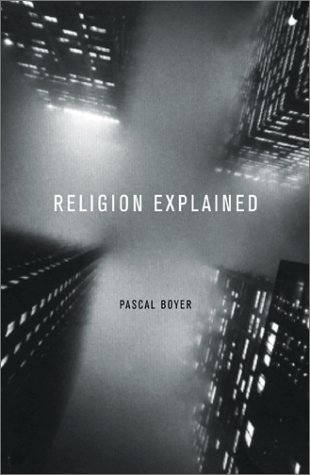 I began this series about religion and religious extremism with the post, Atheists Do Not Understand Religion
I began this series about religion and religious extremism with the post, Atheists Do Not Understand Religion
As I was thinking through the sequel to that post I came up with another application of the principles (essentialism, coalitional behaviour): Atheist Hostility to Jesus Mythicism … making sense of it
Let’s recap with the point with which I began:
As one researcher put it:
The very fact that people in a group share this religious ideology and perform important rituals together sharpens their perception that they are indeed a group with clearly marked boundaries. Worshiping the same gods creates a community and by implication gives that extra edge to the feeling that people with different gods or spirits really are potential enemies. Indeed, people who become deeply involved in religion, for whom it is a matter of vital importance that their doctrine is the only source of truth, will not hesitate to massacre the ones who seem not to acknowledge this obvious fact or whose commitment is too lukewarm. The most heinous crimes will be a celebration of the True Faith. This is how gods and spirits lead to group cohesion, which leads to xenophobia, which leads to fanatical hatred.
Does that sound about right?
The same researcher added
Practically everything in this scenario is misguided.
I will conclude this series with this post. To do so I will refer to both the essentialist perspectives and coalitional behaviours characterized by religious groups and those who see themselves as some sort of atheist community.
I will quote sections of Boyer’s Religion Explained and add comments attempting to explain how I think they can be applied to each group.
People describe themselves as “members” of this or that religious group, with important and often tragic consequences for their interaction with other groups. (p. 285)
Agreed. People do.
These groups are explicitly construed as based on natural qualities—the people in question are thought to be essentially different from the rest, by virtue of some inherited, internal quality. (p. 287)
The internal quality we had when I was part of one group in particular was the holy spirit. We were called by God and given his spirit. That was not a personally inherited quality, but the group was defined as being a kind of “biological”, certainly “spiritual body” that had been in existence since the original day of Pentecost.
One of the most solid and famous findings of social psychology is that it is trivially easy to create strong feelings of group membership and solidarity between arbitrarily chosen group members. All it takes is to divide a set of participants and assign them to, say, the Blue group and the Red group. Once membership is clearly established, get them to perform some trivial task (any task will do) with members of their team. In a very short time, people are better disposed toward members of their group than toward the others. They also begin to perceive a difference, naturally in their group’s favor, in terms of attractiveness, honesty or intelligence. They are far more willing to cheat or indeed inflict violence on members of the other group. Even when all participants are fully aware that the division is arbitrary, even when that is demonstrated to them, it seems difficult for them not to develop such feelings, together with the notion that there is some essential feature underlying group membership.13 (pp. 287f)
We all know that to be true.
Our naive view of social interaction around us is that we are often dealing with people with whom we share some essential features — lineage, tribe, religious practices and so on. But I think we can get a better sense of how such interaction is actually built if we realize that many of these groups are in fact coalitional arrangements in which a calculation of cost and benefit makes membership more desirable than defection, and which are therefore stable. (p. 288 — my emphasis in all quotations)
Ah yes. When about to join a fringe religion we are certainly required to first “count the cost”. There is less of a cost with other more mainstream religions and groups, very often. Continue reading “Towards Understanding Religious Fundamentalism and Extremism (and atheist in-fighting, too?)”
